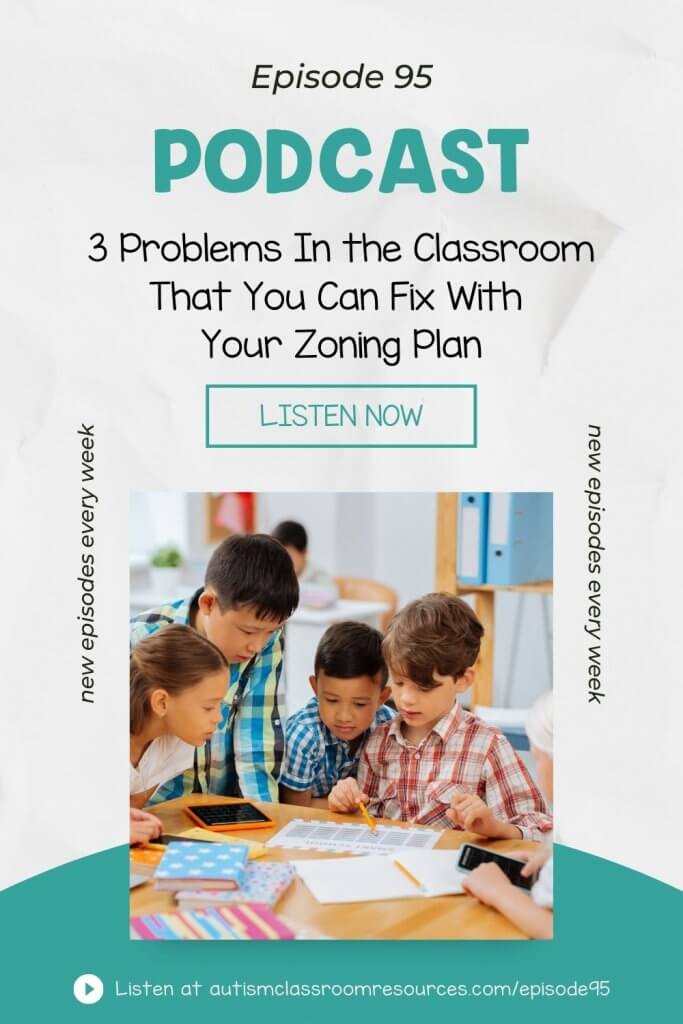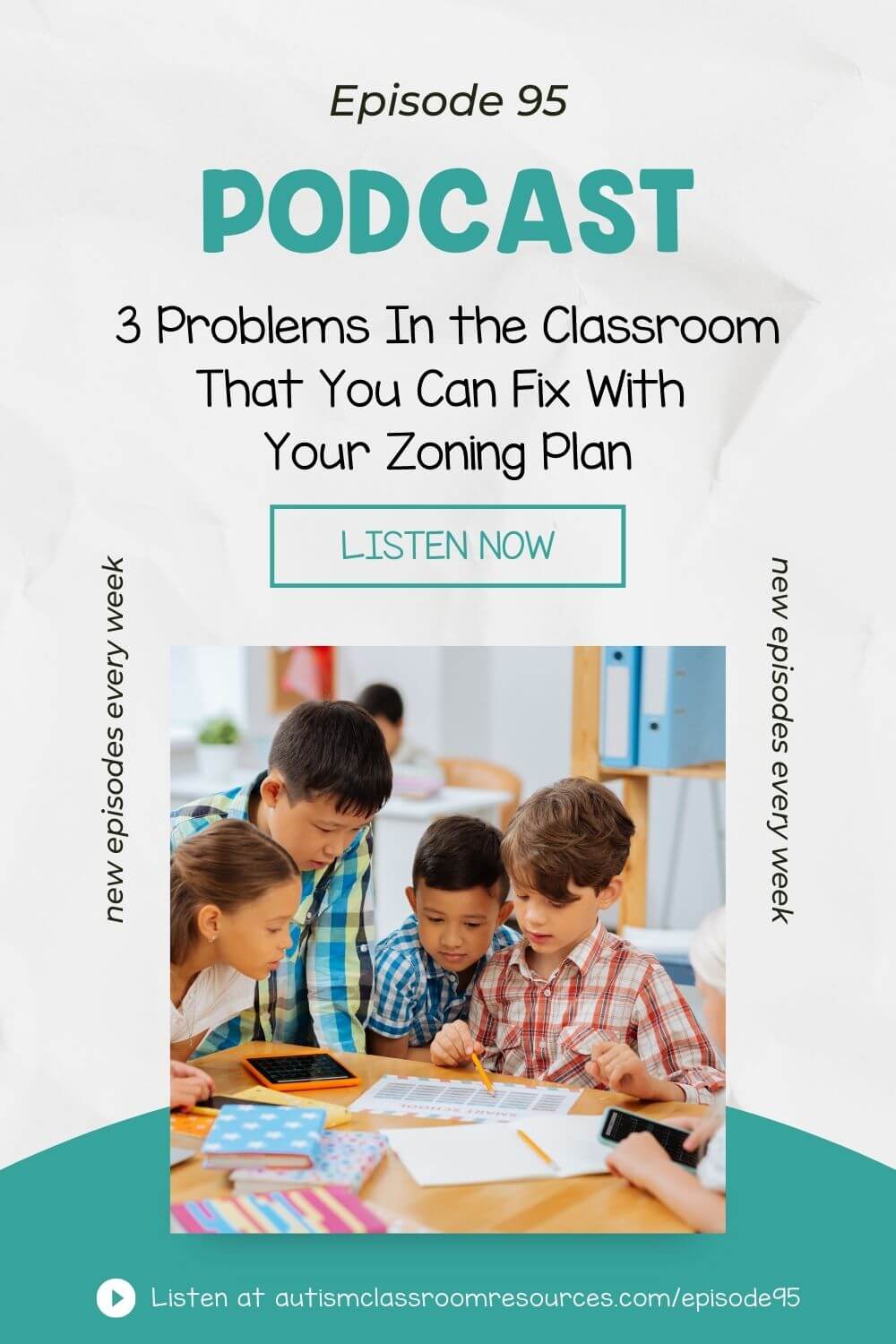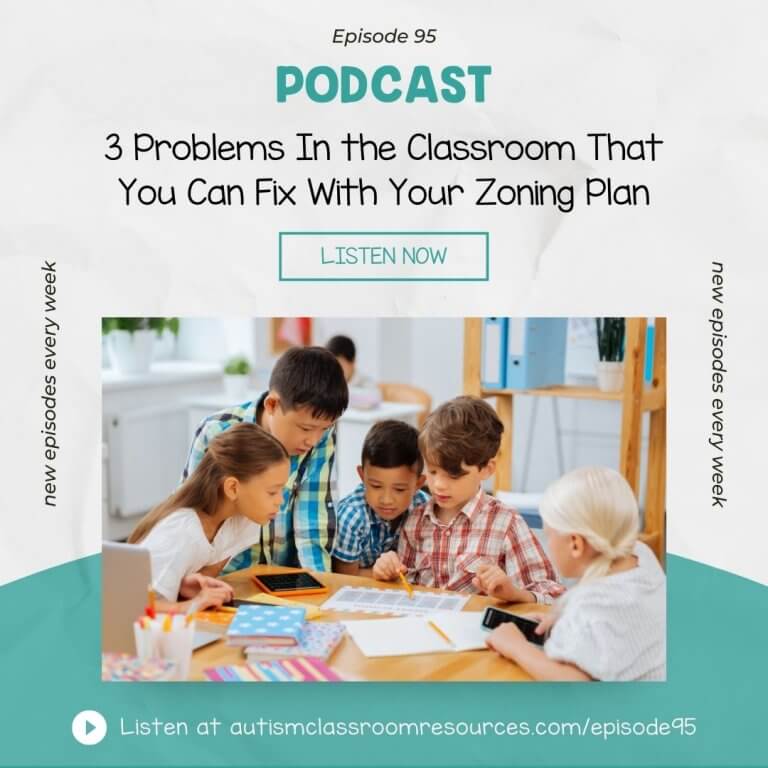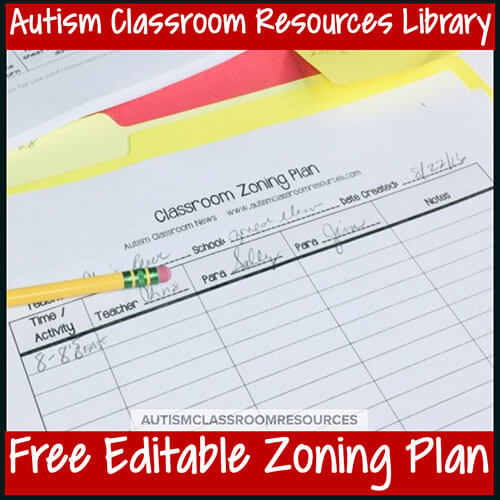Welcome to the Autism Classroom Resources Podcast, the podcast for special educators who are looking for personal and professional development.
Christine Reeve: I’m your host, Dr. Christine Reeve. For more than 20 years, I’ve worn lots of hats in special education but my real love is helping special educators like you. This podcast will give you tips and ways to implement research-based practices in a practical way in your classroom to make your job easier and more effective.
Welcome back to the Autism Classroom Resources Podcast. I’m Christine Reeve and I’m your host. I’m so glad you’re here. We’re going to finish up our snack sized episodes of troubleshooting problems in classroom setup. That brings us today to problems that indicate an issue with the zoning plan. These are issues that are related to staff doing what needs to be done to have the room run on its own. There are obvious ones that I won’t cover like you realize that you didn’t have someone staffing a specific center, those usually work themselves out in a day. Today I’ll be talking about three issues that present themselves a little more subtly but they can be addressed by changing your zoning plan, so let’s get started.
The first issue today overlaps with one that might be related to visual cues or other parts of classroom setup. It’s when students wander away before an activity even begins. I talked about this in Episode 92 when I talked about visual cues. It is related to that but it’s also related to zoning plans in this way: If a student goes to an activity and that activity isn’t set up or he doesn’t have something to do actively and he doesn’t have the skills to engage himself independently—as many of our students don’t—then he’s likely to wander away. But if he checks into an activity and the material is ready for him to sit down and engage with, then he’s likely to immediately engage and remain there.
What that means is that on the zoning plan, we need to establish who is responsible for going to that setting, going to that area and setting up the material at some point so that it’s ready when that student gets there to engage when it’s time. Sometimes that means somebody comes back early from the playground, recess, the cafeteria, or moves from one activity to another in the classroom to make sure the next thing is set up so that it’s ready when the students get there.
The next issue is when there are four staff cleaning the table and twelve students with one staff who’s trying to prepare for a whole group activity. She isn’t able to prepare because she’s supervising those twelve students. Or, there are four staff cleaning a table and a student goes out the door. This is clearly a zoning plan issue. We never need four staff to be cleaning a table. That’s a one person job. It’s probably even one person with a student job. But without clear guidance, the staff is just doing what they know needs to be done. They know the table needs to be clean for the next activity. They don’t know that they need to be engaging students or what they need to engage them in unless the teacher has given that information. That needs to be in the zoning plan. When you see something like that happen, that’s an indicator that we need to make some tweaks to the zoning plan.
Finally, the paraprofessionals are coming back from lunch breaks late so other staff members are not getting to take their time for breaks or lunch because there is no coverage. Again, this is a clear zoning plan issue. If this is written in the zoning plan, it might still happen. But when it does, it’s a whole lot easier to talk about because the expectations were made clear initially. If the times aren’t working, then maybe there’s a reason to make changes to the zoning plan to accommodate specific needs. The zoning plan should be a collaborative document specifically for this reason.
Like the schedule, the zoning is probably one of the easiest things to troubleshoot because when there’s a problem, it’s pretty clear that it’s the zoning plan. If you haven’t done so already, you can find a free zoning plan and links to my Building Classroom Teams toolkit as well as a transcript and related links with zoning plan examples at autismclassroomresources.com/episode95. If you’re looking for more individualized help and support in setting up and troubleshooting your classroom, or just working with students with disabilities, come try a seven-day free trial at specialeducatoracademy.com. We are a training and support site that provides tons of different resources for teachers just like you.
As always, thank you so much for spending this time with me. I know that your time is precious. I hope that you’ll come back next week when I’m going to start talking a little bit about challenging behavior. Until then, I’ll be sitting here thinking about how many people it really does take to clean the table.









